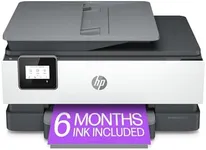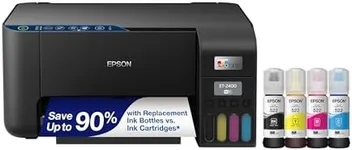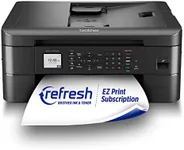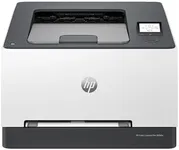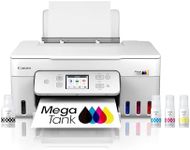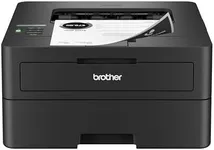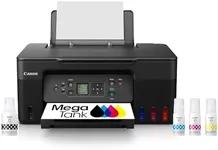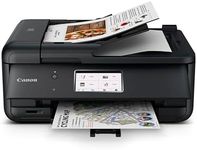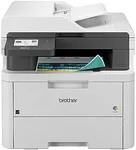Buying Guide for the Best Wifi Printers
Choosing the right WiFi printer can make a significant difference in your printing experience, whether for home or office use. WiFi printers offer the convenience of wireless printing, allowing you to print from multiple devices without the need for physical connections. To find the best fit for your needs, it's important to understand the key specifications and how they align with your specific requirements.Print Quality (Resolution)Print quality is measured in dots per inch (DPI). Higher DPI means better print quality, which is important for printing detailed images and professional documents. For general home use, a resolution of 600 x 600 DPI is usually sufficient. For high-quality photo printing or professional documents, look for printers with 1200 x 1200 DPI or higher. Consider what you will be printing most often to determine the necessary print quality.
Print SpeedPrint speed is measured in pages per minute (PPM). This spec is important if you need to print large volumes of documents quickly. For occasional home use, a speed of 10-20 PPM is typically adequate. For office environments or frequent printing, look for printers with speeds of 20-40 PPM or higher. Assess your printing frequency and volume to choose the right print speed for your needs.
Connectivity OptionsWhile WiFi is a key feature, additional connectivity options like USB, Ethernet, and Bluetooth can provide more flexibility. USB is useful for direct connections, Ethernet is ideal for stable network connections in offices, and Bluetooth allows for easy printing from mobile devices. Consider the variety of devices you will be printing from and choose a printer that offers the necessary connectivity options.
Paper HandlingPaper handling refers to the types and sizes of paper a printer can accommodate, as well as the capacity of its paper trays. For home use, a standard tray that holds 100-150 sheets is usually sufficient. For office use, look for printers with larger capacities and the ability to handle different paper sizes and types, such as envelopes and cardstock. Think about the types of documents you will be printing and choose a printer that can handle them efficiently.
Duplex PrintingDuplex printing allows a printer to print on both sides of a sheet of paper automatically. This feature is important for saving paper and creating professional-looking documents. If you frequently print double-sided documents, look for a printer with automatic duplex printing. For occasional use, manual duplex printing (where you flip the paper yourself) may be sufficient.
Ink or Toner TypeWiFi printers can use either inkjet or laser technology. Inkjet printers are generally better for high-quality photo printing and color documents, while laser printers are more efficient for high-volume black-and-white printing. Consider the type of documents you will be printing most often. If you need vibrant color prints, go for an inkjet printer. If you need fast, high-volume text documents, a laser printer is a better choice.
Mobile Printing CapabilitiesMobile printing capabilities allow you to print directly from your smartphone or tablet. Features like Apple AirPrint, Google Cloud Print, and manufacturer-specific apps can make mobile printing seamless. If you frequently use mobile devices, ensure the printer supports these features. This will provide greater convenience and flexibility in your printing tasks.
Cost of ConsumablesThe cost of consumables, such as ink or toner cartridges, can significantly impact the overall cost of owning a printer. Some printers have high initial costs but lower ongoing costs for consumables, while others may be cheaper upfront but more expensive to maintain. Research the cost and yield of the printer's consumables and consider how often you will need to replace them. This will help you choose a printer that fits your long-term budget and usage patterns.
